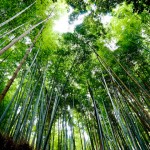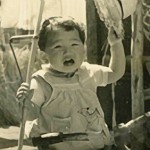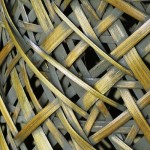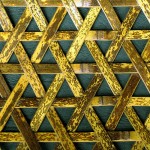Kenichi Mouri continues to challenge the tradition
There is a strong link between bamboo and Kenichi Mouri. Born in Beppu, Oita Prefecture on Kyushu Island where it is known for its bamboo production and bamboo works. If you are an onsen aficionado, you may know Beppu as one of Japan’s “Three Great Hot Springs,” well we could go on with the subject but let’s not detour.
Bamboo works of Beppu has a history of over 400 years and the area has many bamboo forests where Kenichi grew up. On top of that, his father was a bamboo craftsman and Kenichi was literally surrounded by bamboos all his childhood days.
After graduating school, he decided he had to leave his hometown to see some other world besides bamboos. He landed a job in a printing company in Tokyo and worked for five years, which made him prove that it wasn’t what he wanted.
He returned to his hometown Beppu and emerged himself in bamboo work creations under the tutorage of master Kohou Kajihara. In no time, he was recognized as a prominent craftsman and his works has won numerous prizes at craft shows throughout Japan, including winning the prestigious Prime Minister’s Grand Prix at Japan Traditional Crafts Contest in 1995 among others. He has exhibited at numerous arts and crafts galleries and also entered his works at Paris Collection with Japanese fashion designer, Junko Koshino. His quest for finding fresh ideas for his craft still continues after 30 years as a bamboo craftsman.
In retrospect, Kenichi says “leaving my hometown was good, I had a chance to see my father’s work from a different perspective. Also, bamboo which was so common to me, had a new meaning when I saw them from Tokyo. Working at the printing company gave me a great opportunity to learn about colors. It was such a good experience living and working in Tokyo, for it made me explore the meaning of traditional craftsmanship and what I wanted to do with the bamboo creations.”
No wonder, Kenichi’s gorgeous bamboo and rattan bags are characterized by a beautiful blending of traditional Japanese weaving methods and a modern shape and colors.
Some of the bamboo weaving methods used in creating his works are random weave, wickerwork weave, hemp-leaf weave and cobblestone weave, just to name a few. Sometimes he combines different methods to create the shape and texture that he wants. Colors are applied with urushi (Japanese lacquers) by special techniques giving bamboo and or rattans an unique glossy and matte surface coloring effects.
See Kenichi Mouri’s bamboo bags here and his rattan bags here at the JapanUniqueGifts.com













